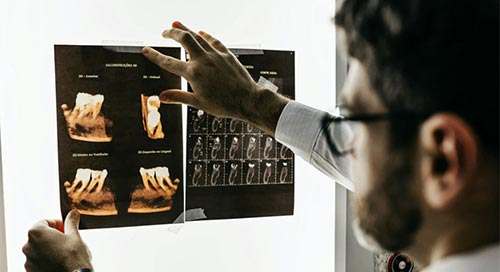interview-patient-centered-practice
July 22, 2022

Dr. Charles Young is an experienced medical editor, publisher, and writer. He is a founding editor-in-chief of the journals Clinical Case Reports and Health Science Reports and is a practicing emergency room physician at St. Thomas Hospital in London.
Our team recently sat down with Dr. Young to hear about his views on the future of healthcare and the value of a role in scholarly communications. Read the rest of our interview.
Q: In an earlier interview, we talked about patient centricity as an emerging trend in healthcare. What are some of the challenges to delivering healthcare through this lens?
With patient focus comes this idea of value and quality. The number of patients around the world – the number of healthcare consumers – is increasing significantly. In order for healthcare to be sustainable and meet those needs, healthcare systems have to have this dyad of value and quality. Healthcare systems have to deliver excellent quality because that’s how you care for people properly, but it has to be an appropriate level of value – you can’t spend a trillion dollars on each patient and be sustainable.
So how do we do this? How do we maintain a patient focus but keep high value and quality? That’s where, for example, digital tools and the importance of the administrative elements of healthcare become really important.
Q: Can you speak more about the “administrative elements” of healthcare and how they impact your work as a physician?
So I’m a doctor – I’m standing there doing my thing. I’m treating patients and talking to relatives and doing what I do as a clinician. But the only reason I can do that effectively is because there’s a good quality building around me. The lights are on. I’ve got an IT system that gives me access to information about the patients, etc. The quality of my outcomes would be much lower if I didn’t have all that administrative structure around me.
Previously, the administrative components of healthcare were belittled. They were called “back office” and often ignored from a clinical perspective. I think a very important future trend is the emerging awareness of the importance of those administrative elements.
Q: Administrative issues in healthcare settings, especially PPE and staffing challenges, have been big headlines over the past few years as we navigated the global COVID-19 pandemic. In what other ways do you think the pandemic has changed the direction of healthcare?
The pandemic has done two things, one of which is to raise everybody’s health awareness around the world. Everybody – clinicians, non-clinicians, the whole world—has realized a bit more clearly “okay, health is important!” And the pandemic has also shifted everybody’s risk perception slightly. Suddenly this big infection came along and absolutely changed everybody’s life everywhere. And so, we’re thinking, “we didn’t even know that could happen! When is that going to happen again? Could it happen again?” We’ve had a shift in awareness and risk perception that will change the way we look at healthcare moving forward – in a positive way!
Q: A lot of people experienced telehealth for the first time during the pandemic. What are your thoughts on the pandemic in relation to telehealth services?
The pandemic really emphasized the importance of face-to-face contact – both in clinical practice and more generally. At the same time, it illustrated the utility of remote contact. People realized you can do things remotely, but equally that you can’t do everything remotely. And even if you can do something remotely, maybe that’s not the best way of doing it in some situations.
We’re getting to that shared understanding – and maybe we’re not there completely, but at least it’s a topic that people understand more than before the pandemic. We can start thinking about questions like whether all primary care should be done remotely, or whether a GP should see patients face-to-face; whether it’s okay not to go into the emergency department, but have a Teams call instead. The pandemic has raised those questions and pushed them up the priority list by illustrating the importance of these issues.
Q: Do you find that people have more interest in clinical medicine because of COVID?
Yes, definitely. The percentage of people who are more informed and asking more pertinent questions is higher now than it used to be, both about COVID itself, but also about health more generally.
Q: It sounds like patients have access to more information than in the past; but we’re all aware of the challenges of misinformation throughout the pandemic. Has misinformation been a challenge for you as you work with patients?
This experience isn’t COVID-specific; it happened before COVID as well. I meet people in the emergency department who have a specific intervention they want me to do, which I know doesn’t work. Then we have a long conversation, which is actually very constructive. I’m not against that at all.
The most difficult patients for me are patients who aren’t interested in their own healthcare. If they’re not interested, it’s really hard to them to comply with plans to make them better or keep them better. So even if someone has got a view, even if it’s the wrong view, actually that’s not a bad thing – at least they have taken the time to form a view and then we can have a reasonable discussion. They’re engaged, and that makes a big difference.
Want to stay up to date on medical research? Explore our portfolio on Wiley Online Library or follow us on Twitter at @WileyHealth.
Is your organization interested in subscribing to Wiley titles? Learn more about our purchase models and access options for healthcare organizations.




